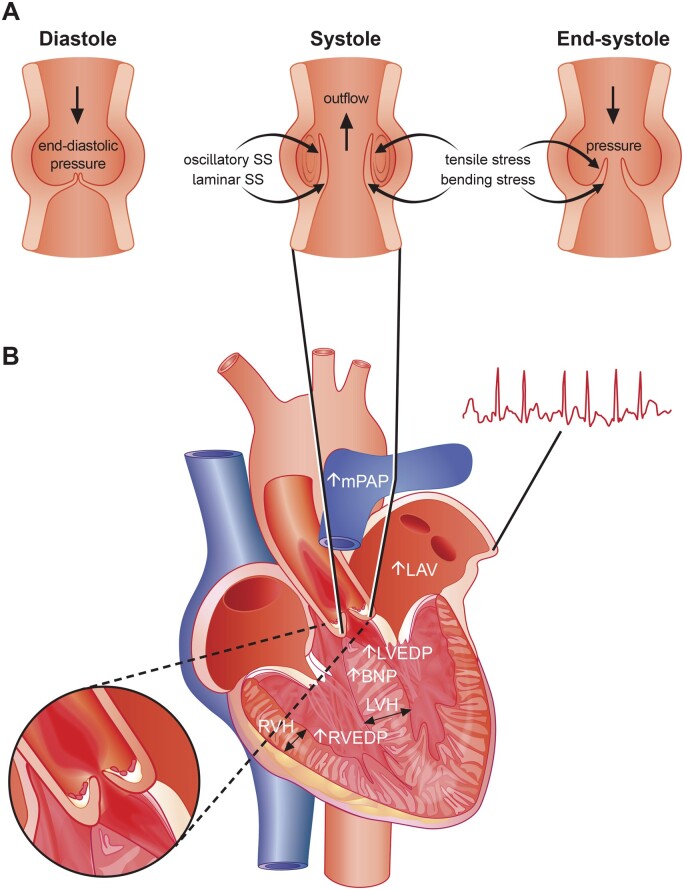Figure 3.
Hemodynamic flow across the aortic valve and myocardial alterations occurring with advanced calcific aortic valve disease. (A) The hemodynamic forces aortic leaflets are exposed to are shown. Note that disturbed hemodynamic flow can perturb tissue homeostasis by acting on pro-inflammatory and pro-fibrotic signalling, thereby promoting calcific aortic valve disease progression and eventually the development of aortic stenosis. (B) As calcific aortic valve disease progresses and impediments in left ventricular outflow occur, left ventricular hypertrophy and myocardial fibrosis evolves leading to reduced left ventricular longitudinal function, although left ventricular ejection fraction typically remains unchanged in the majority of patients. If left untreated, the left atrium enlarges, enhancing the susceptibility to atrial fibrillation. Due to left ventricular hypertrophy and the reduced diastolic pressure gradient, coronary flow reserve can substantially decrease leading to cardiomyocyte loss further perpetuating processes underlying myocardial fibrosis. At late disease stages, secondary pulmonary hypertension and right-ventricular dysfunction evolves.

